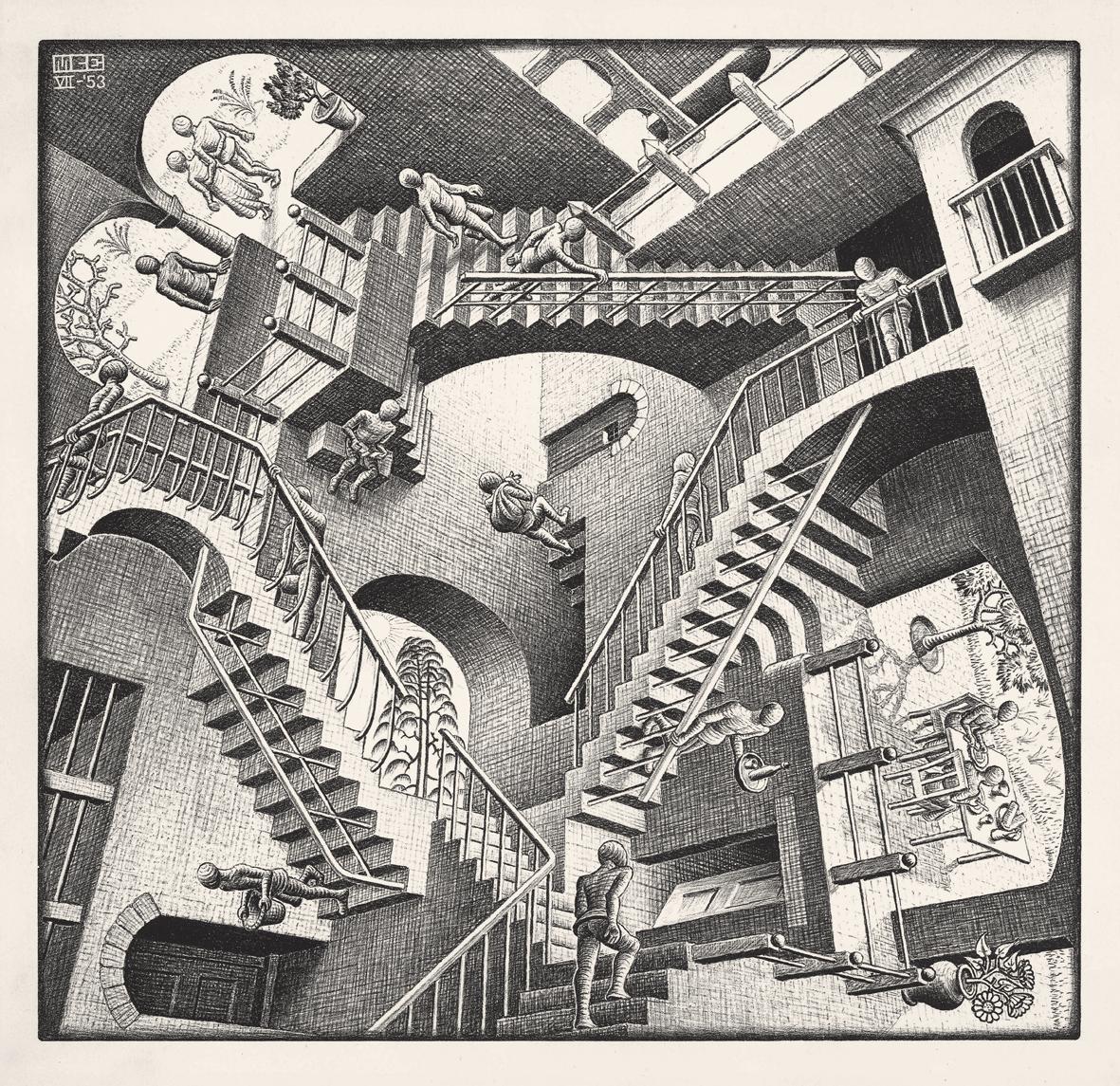
Our universe has been the subject of study since the dawn of agriculture, once people needed to know when to plant and harvest, they had to memorize the stars during a certain time of year. As a species, we have been craning our head up for centuries, wondering what is out there? Until the middle of the second millennium, all thought relating to the cosmos has been associated with a form of divine power. The invention of the telescope that corresponded to the enlightenment period, a time when educated persons began to question the church and its teachings. These ideas were again reinvented shortly after WW1, when Albert Einstein came up with his ideas of relativity. In short, he presented the idea that what we see and perceive, may not be what is truly there. M. C. Escher portrayed this in his paintings such as this one shown. The direction of the staircase all depends on who is perceiving the staircase in the first place. Nowadays, Physicists widely accept that our universe is made up of about five percent matter and atoms, twenty-five percent dark matter, and seventy percent dark energy. What we are able to perceive and interact with is matter, and while looking through a telescope, one can see thousands and thousands of galaxies each filled with billions of stars and trillions of planets, this is a mere five percent of the universe. Of the other ninety-five percent, dark matter is the least understood- it is a postulated particle which would interact very weakly with normal matter. This dark matter has been researched through careful observation of the speed at which objects orbit the center of a galaxy. This speed is used to calculate the amount of mass the object about which things rotate holds, however, this calculation brings to light a large piece of missing mass (now thought to be dark matter). Dark energy, on the other hand, is much more perceivable. First off, ever since the big bang happened fourteen billion years ago, the universe has been expanding, we know this because of the hue of stellar objects as they move towards and away from us. According to the laws of physics the majority of the people know, this expansion should be slowing down. Upon research of Super Nova explosions to trace this expansion, scientists have discovered that the speed at which the universe is expanding is actually speeding up.
sources:
http://map.gsfc.nasa.gov/universe/uni_matter.html
http://www.arshake.com/en/lenigma-escher/ (painting)
It would be interesting if you talk about black holes, as they are such a fascinating topic.
ReplyDeleteIt would be interesting if you talk about black holes, as they are such a fascinating topic.
ReplyDelete